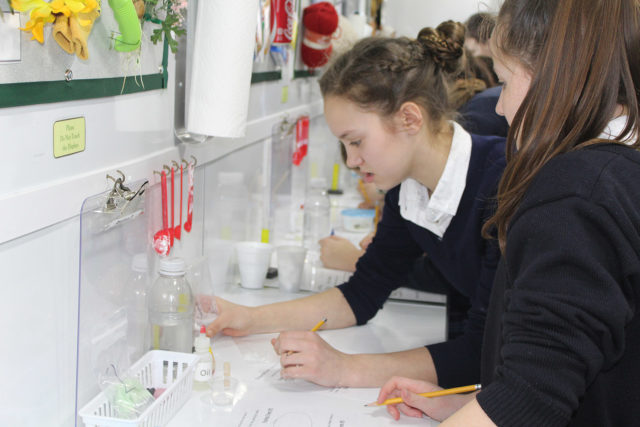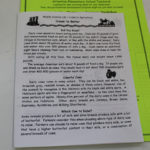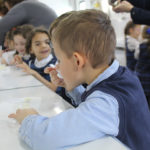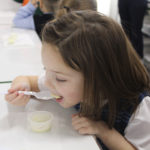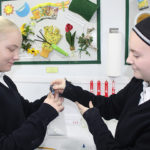ELKTON, Md. — Agriculture remains a leading industry in Maryland, but many of the young people who live in the state are not aware of how important it is. Immaculate Conception School recently tried to build appreciation for farmers and the work they do by hosting the Maryland Agricultural Education Foundation’s mobile science lab.
For a week in early March, a trailer behind the Elkton school served as an extra classroom, one where the students went hands-on in seeing how the crops and animals raised by farmers affect their everyday lives. They saw the environmentally friendly versatility of corn, cultivated seeds, and made butter, among other lessons.
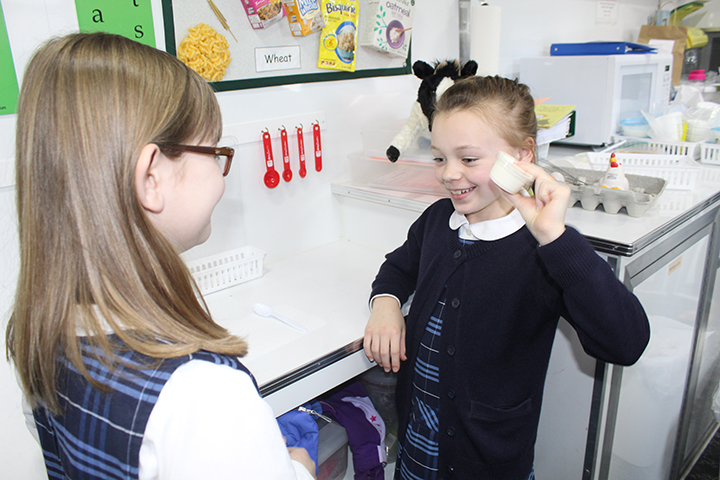
“It gives the kids more exposure to the agriculture, especially in our area, and how farmers in our area are able to put to use and sell. It just gives them a special look into the agricultural culture in Maryland,” kindergarten teacher Maggie Birney said.
Her students had the opportunity to make butter. They listened to a story called “The Cow in Patrick O’Shanahan’s Kitchen,” which involved various the ways various farm animals are part of human life. Xavier Moran, one of Birney’s students, said the cow made the milk, a chicken produced eggs, and a tree was the source of syrup. There was also bacon from a pig in the story.
His job, and that of his classmates, was to make butter from cream. They did that by shaking small cups of cream vigorously for five to seven minutes, then pouring off the remaining liquid. What was left was butter, which they were invited to taste. Xavier and his classmate Kyle King, were not impressed. They said it tasted like soap.
“I didn’t like it,” Kyle said.
The ag lab instructor, Sherry Levengood, told the kindergarteners that the butter sold in stores has other ingredients to add flavor and color and to help it last longer. Xavier specifically recommended one of the extra ingredients to those who are thinking about making their own butter.
“Put a lot of salt on it,” he advised. “All the salt.”
Birney was not as brave as her students when it came to sampling their product. “I’ll shake the butter. That’s fine. But the tasting, not so much.”
Some of the older students went to work with corn later that day. They heard from Levengood about environmentally sustainable properties of corn and how it can be used in place of other products. Kayla Proctor, one of the sixth-graders, said they took cornstarch, corn oil, food coloring and water, mixed them together and heated them to make a solid eco-foam that possibly could be used instead of Styrofoam.
She and her classmates, including Kristen Perkis, also did an experiment to see if the eco-foam could stand up to extended exposure to water. Kristen said it was nice to get out of the classroom and into the trailer.
“It’s different from what we do,” she said.
Levengood, who lives in Caroline County and attends Immaculate Conception Church in Marydel, Md., travels around Maryland giving these lessons. She was a classroom teacher for 30 years but enjoys working in the ag lab, where she has “no paperwork, no lesson plan, no conferences and no grades.” She enjoys working up close with the students.
“They have an appreciation for what’s around them, and they aren’t afraid to ask questions,” Levengood said.
Agriculture in Maryland faces obstacles – development pressure, environmental concerns and increasing expenses – that are driving some farmers to other professions.
“But we still have a world to feed,” she told the eighth grade. “The way we do that is through science.”
Levengood and her husband operate a farm that used to have animals, which they would let roam their land. But expenses related to waste control prompted them to grow crops only, and they produce soybeans, hay, barley, wheat and rye. Each year, they send soil samples to a laboratory so they can find out which chemicals they need to add and which are already sufficiently present in the soil.
“Those chemicals are extremely expensive, and if you buy more than you need, you’re wasting your money,” she said.


